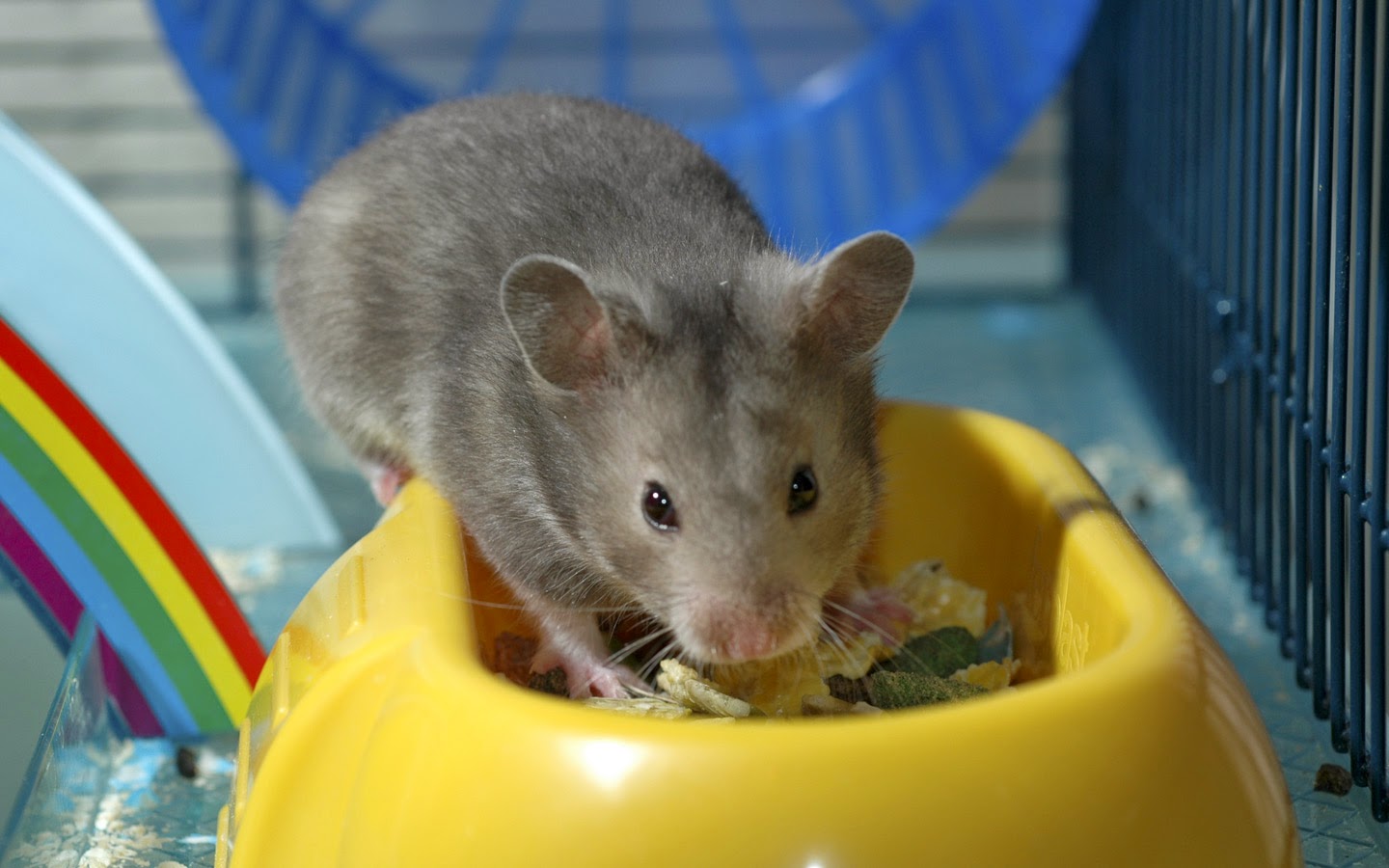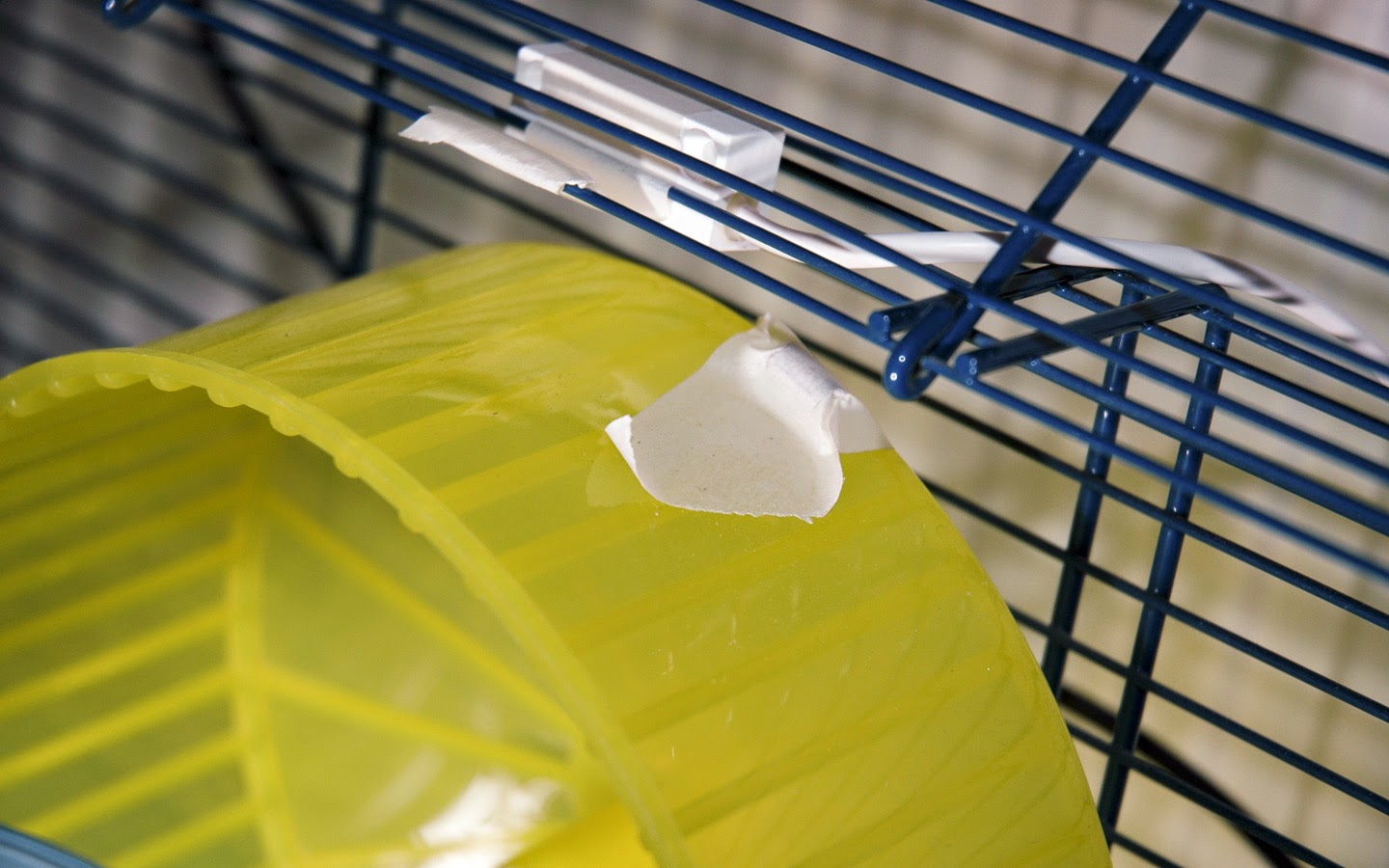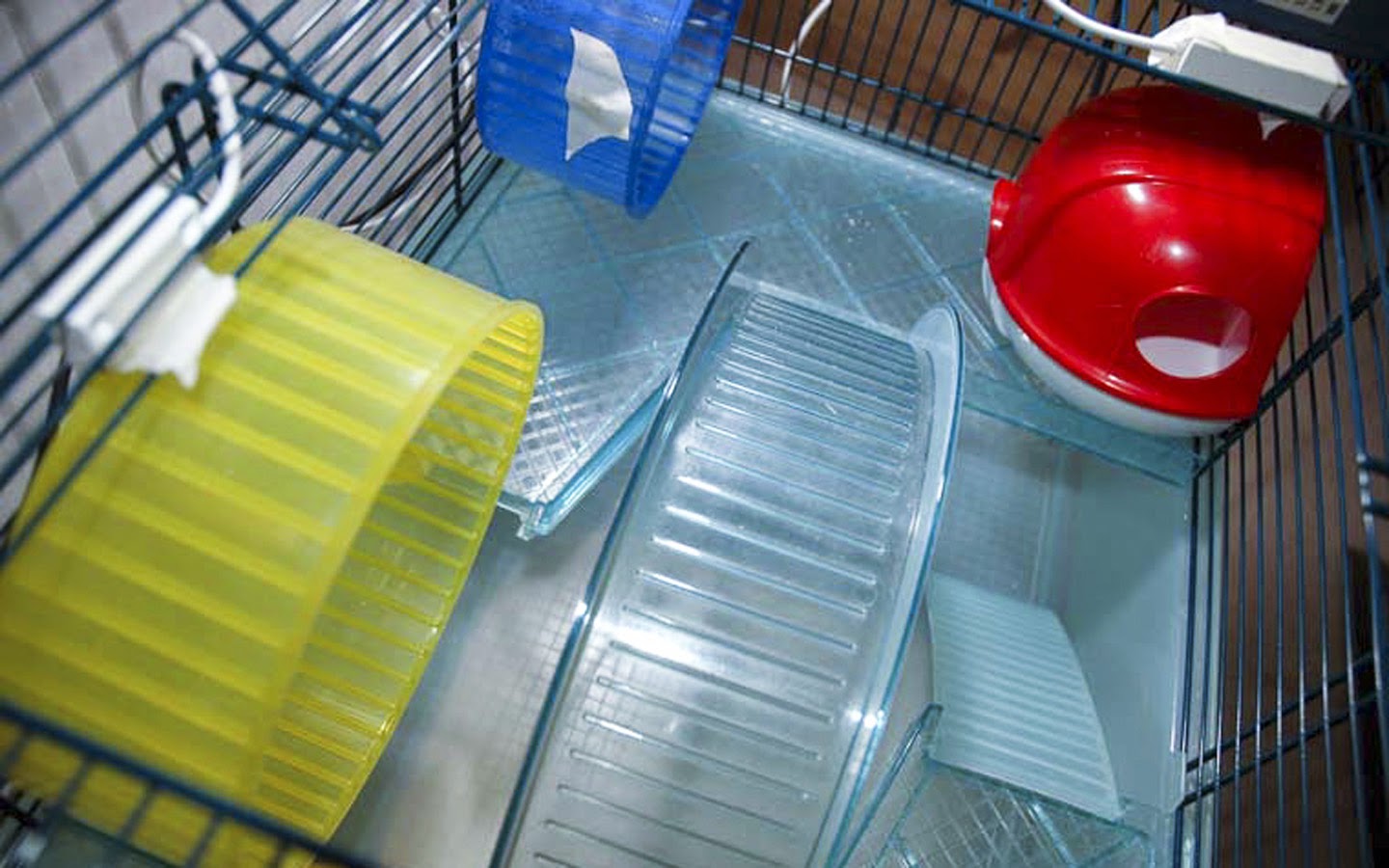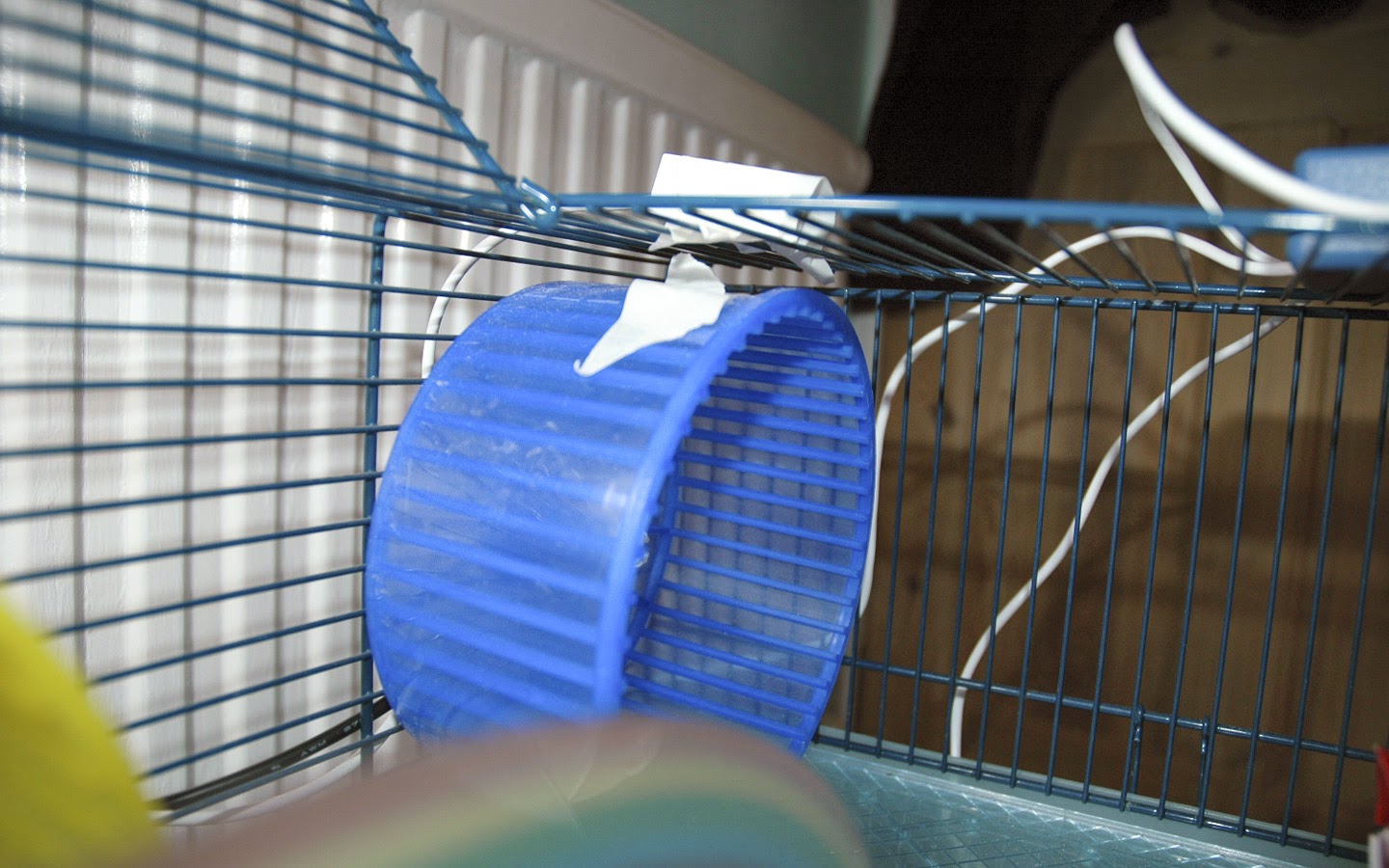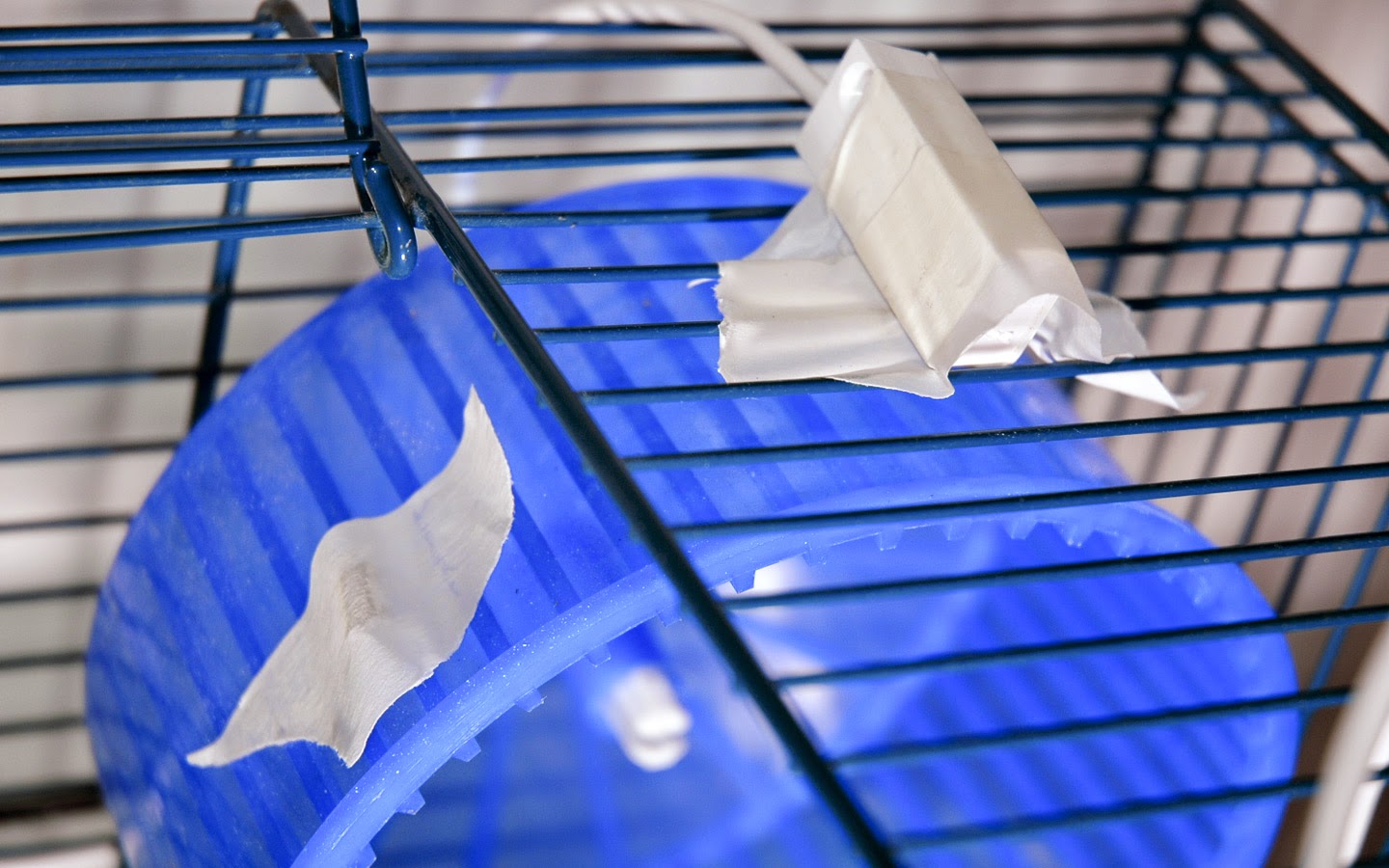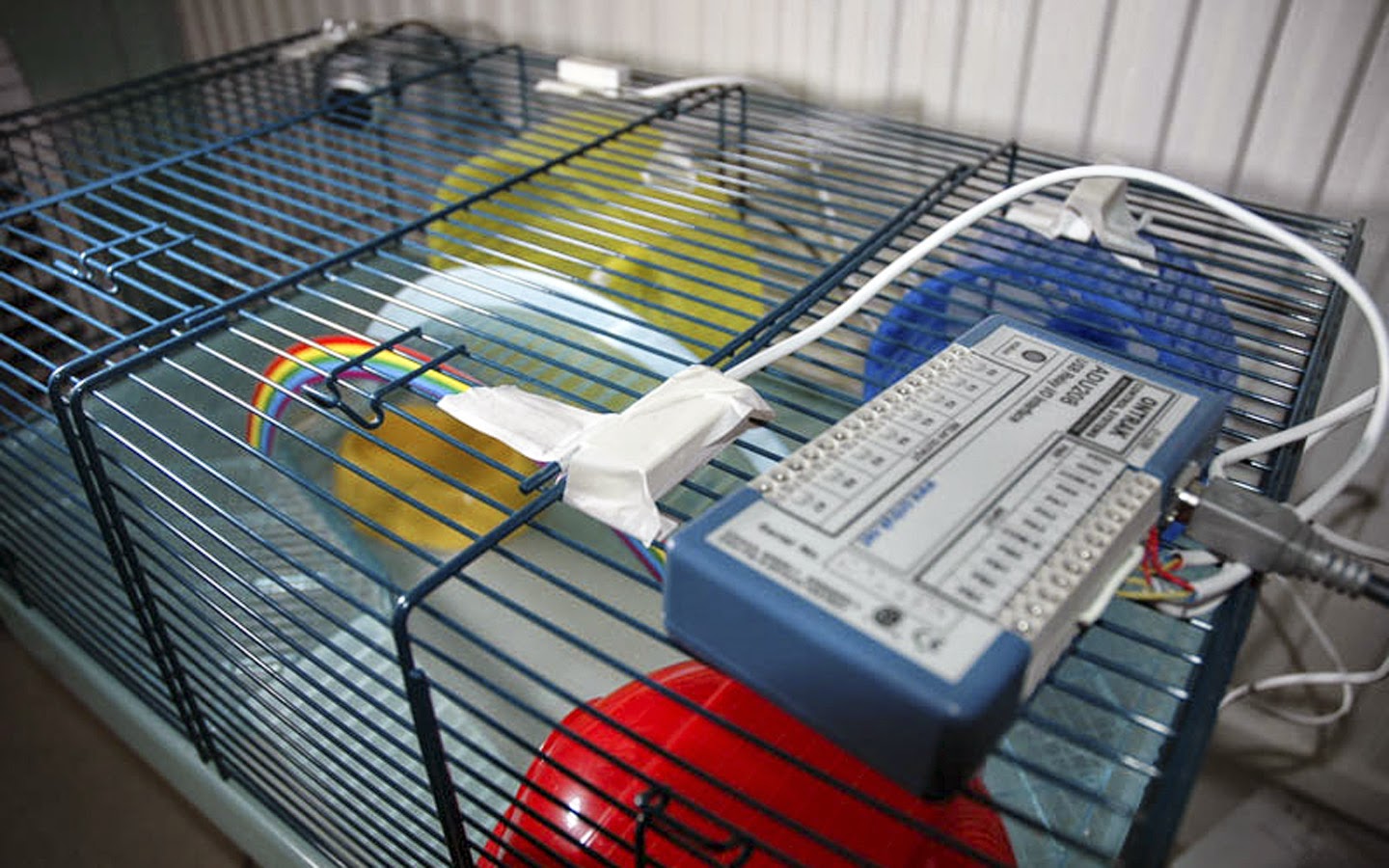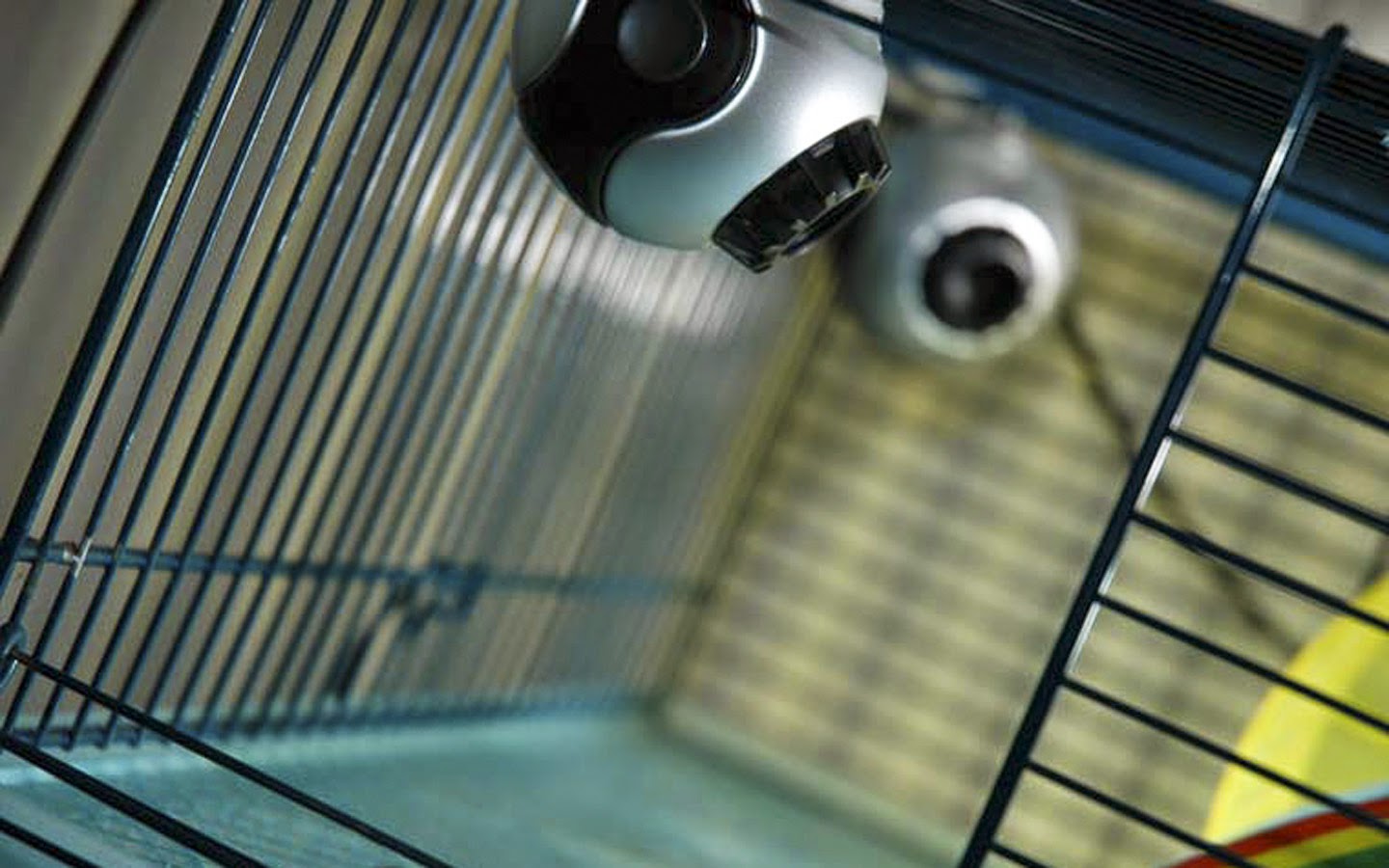This installation, “Zero One,” presents a seemingly contained microcosm – the life of a single hamster within the confines of a technologically mediated cage – to reflect upon the pervasive architectures of surveillance that increasingly define our contemporary reality. Drawing inspiration from the dystopian vision of George Orwell, the work invites contemplation on the erosion of privacy and the subtle disruptions that betray the presence of unseen observation, even within the everyday environment of a pet’s habitat.
Within this miniature panopticon, the hamster, designated Zero One, becomes an unwitting protagonist in an ongoing study of routine and deviation. The images reveal a multi-level wire cage furnished with colorful elements: yellow and blue exercise wheels, a red and white house, and a yellow food dish. Cameras are positioned within the cage to capture the minutiae of the hamster’s existence: the cyclical patterns of feeding, drinking, and rest. Complementing this visual scrutiny, an Ontrak ADU208 USB Relay I/O Interface J1-USB, connected to the cage by white cables, meticulously tracks the revolutions of the exercise wheels. White tape is visibly used to attach magnets to the wheels, a practical solution employed during the artist’s experimentation with monitoring the hamster’s activity. This combination of visual and kinetic data collection generates streams of information that chart the rhythms of the hamster’s nocturnal activity. Any divergence from these established patterns prompts the artist’s inquiry, mirroring the algorithmic analyses that increasingly govern our own lives.
“Zero One” thus becomes a poignant mirror, reflecting the intersection of organic existence and the detached gaze of mechanical surveillance. The installation subtly probes the ethical boundaries of observation, raising questions about the nature of privacy not only for the human subject but also for the sentient being placed under constant scrutiny. The project’s interactive element – a live online stream of Zero One’s habitat – further implicates the viewer, blurring the lines between detached observer and participant in this act of digital witnessing. This online gaze mirrors the pervasive connectivity of our world, where personal lives are often rendered public through the very technologies designed to connect us.
The abrupt conclusion of “Zero One,” born from unforeseen practicalities, serves as a reminder of the fragile and often unpredictable nature of existence, even within systems designed for control and observation. Yet, this transience does not diminish the work’s prescient commentary. Conceived in 2006, “Zero One” predates the widespread adoption of ubiquitous sensing technologies and the normalization of personal data collection, positioning it as an early artistic exploration of the profound shifts in privacy and surveillance that have come to characterize the digital age.
“Zero One” stands as a quiet yet compelling meditation on the subtle power dynamics inherent in observation, the normalization of surveillance, and the intrinsic value of privacy in an era where every move, whether human or hamster, can be recorded and analyzed. It resonates with the broader themes explored in the artist’s oeuvre, questioning the impact of technology on our perceptions and the delicate balance between connection, observation, and individual autonomy.
A Note on the Project’s Conclusion: In a somewhat ironic twist, the ambitious surveillance endeavor of “Zero One” was ultimately curtailed by the practical realities of cohabitation. Complaints about the hamster’s nocturnal noise and odor, as well as an unexpected escape during a social gathering, brought the project to an unplanned but perhaps conceptually fitting end. This intrusion of the unpredictable and the uncontrollable into a controlled environment serves as a humorous and poignant counterpoint to the installation’s exploration of surveillance and the illusion of complete observation.
Materials Used: Hamster, wire cage, cameras, yellow and blue exercise wheels, red and white house, yellow food dish, magnets, white tape, Ontrak ADU208 USB Relay I/O Interface J1-USB, computer, software, internet.

